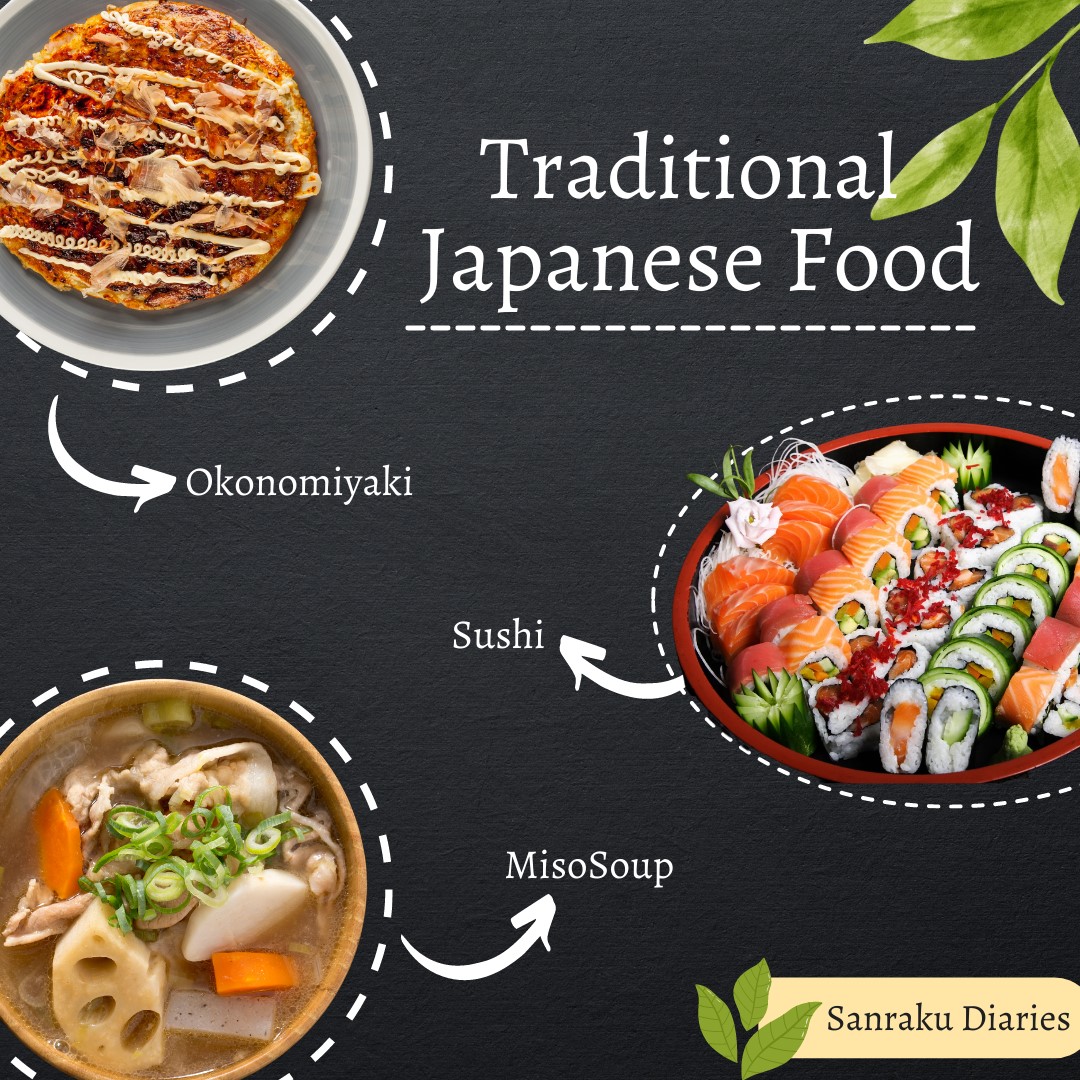As a food blogger, many people ask me about the specialties, cuisines, and signature meals from all over the world. I recently met my old American pal who was planning a voyage to Japan, so she asked me, “what are traditional Japanese foods?” When I started describing the wide variety of foods comprising Japan’s culinary culture to her, I realized just how much more there is to explore.
Indeed, traditional Japanese dishes offer a distinctive fusion of tastes, textures, and cooking methods that are sure to satiate the demands of any food enthusiast. So whether you’re a seasoned traveler or just trying to broaden your gastronomic horizons come along with me as we delve into the world of traditional Japanese cuisine.
What are Traditional Japanese Foods?
One of the most popular aspects of Japanese culture is its unique cuisine, influenced by centuries of cultural heritage. Traditional Japanese cuisine, or washoku, emphasizes fresh, locally sourced ingredients, precise cooking techniques, and aesthetic presentation. Moreover, uniquely balanced flavors like sweet, savory, and umami make these meals distinct from other cuisines.
Do you want some good food options for your next Japan trip? Discover the essence of Japanese cuisine with my ten years of food blogging experience! In this article, I’ve meticulously curated a list of must-try foods you can find on every Japanese street and restaurant. From mouth-watering ramen to savory sushi, each iconic dish is described in detail below. Join me on a culinary journey through Japan and tantalize your taste buds with these heavenly-umami flavors.
Sushi
Sushi is the quintessential meal of Japanese cuisine. Traditionally, sushi consists of raw fish and seafood prepared with vinegared rice and rolled in nori seaweed. It is seasoned with soy sauce, salt, brown sugar, and wasabi.
Moreover, exotic fruits and vegetables such as pickled plum, daikon radish, cucumber, avocado, carrot, bell pepper, and shiso leaves add to the freshness and savoriness of the sushi. Since the popularity of sushi has now spread outside of Japan, it is now available worldwide. But if you want to experience real taste and technique, add sushi to your next tour wish list.
Also Read: How To Cook Sushi Rice Like A Michelin Star Chef
Soba and Udon
Noodles complement a wide variety of traditional Japanese foods. It is not wrong to say that noodles are a staple of Japanese cookery. Amongst the hundreds of different kinds, soba and udon are the most popular.
Soba noodles are made of buckwheat flour, known for their unique earthy and nutty flavor. These are gluten-free and, indeed, the healthiest option. You can have them while traveling since they are light on the stomach and packed with nutrients.
With their mild flavor and bouncy texture, udon noodles can generously infuse any flavor of the broth or soup they are dipped in. Boiled or stir-fried (yaki udon) are super nutritious and healthy if you portion them with adequate proteins.
Miso Soup
Miso soup occupies a special place in the hearts of Japanese and, of course, has an exclusive prestige in Japanese cuisine. The soup is typically made of dashi stock and miso, a fermented paste of soybeans, and koji (the fungus). Due to the unique core ingredients and preparation techniques, miso comes in many flavors, such as red, white, barley, and blended.
Refreshing green onions, protein-rich tofu, and seaweed are the typical servings of this nutritious soup. Miso soup is incredibly hearty, comforting, and healthy; therefore, if you intend to go to Japan in winter, get your hands on this delectable meal.
Okonomiyaki
Okonomiyaki is a simple yet intricately flavored savory pancake, one of the most-loved Japanese street food. Okonomiyaki in Japanese means “grill as you like, so you need to sear it on the pan to the extent you prefer.
The meal comprises a pancake batter folding many different vegetables and proteins, such as bonito flakes, fish, pork belly, squid, shrimp, and mushrooms. Then, the exclusive okonomiyaki mouth-watering sauce on the top spruce up the overall savoriness of the dish.
Unagi
Unagi has been an iconic dish and a delicacy in Japan for decades. It is frequently served over a base of rice and grilled with a sweet and savory sauce. Unagi is a distinctive and scrumptious meal that you might not be able to experience anywhere; therefore, you must try it when hitting Japan. Moreover, as a good source of protein and essential vitamins and minerals, unagi is also said to provide several health advantages.
In conclusion, traditional Japanese cuisine offers a wide variety of mouthwatering and exclusive meals that will quench every food lover’s cravings. There is something for everyone to appreciate, from the delicate flavors of sushi and the rich, savory taste of unagi to the cozy warmth of miso soup and the hearty goodness of okonomiyaki, soba, and udon noodles.
Whether you’re a seasoned traveler or an avid food enthusiast, discovering Japan’s diverse culinary milieu is an experience not to be missed. These traditional foods are not only mouthwatering, but they also provide a glimpse into Japan’s rich culture and history. So, what are you waiting for? Trust us; your taste buds won’t regret trying these mouth-watering traditional Japanese foods.
Also Read: What Is Donburi Japanese Food? Exploring Traditional Japanese Meals
What Is Donburi Japanese Food? Exploring Traditional Japanese Meals

